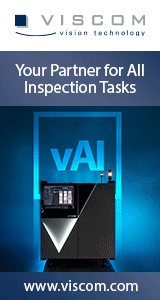|

|
|
| Ask the Experts | |||||||
|
|||||||
|
July 18, 2018 - Updated February 28, 2011 - Originally Posted Batch Reflow vs. In-line ReflowWe have been producing small batches of lead-free boards using a bench-top reflow oven that we want to replace. We have narrowed down the options to either a drawer type batch oven, or a small conveyor type reflow oven. Both look like they will get the job done, and have very similar specs and features. Assuming that all things are equal, which would be the better option, a conveyor type oven or a batch type? R. W. |
|||||||
| Expert Panel Responses | |||||||
|
I have 13 years of experience selling batch and inline ovens. Batch ovens have their place. Smaller simple PCB, but for even prototyping a good, small inline from a quality MFG like ESSEMTEC will give you the performance of ovens 2 times the size. For lead free the tunnel oven is easier to profile. Question for you... What type of power do you have? Single or three phase? Do you see your volume growing or PCB increasing in complexity?
Vice President Essemtec USA Steven Pollock has worked in the industry for OEMs, and large CMs before moving to application Sales. Pollock has been working in SMT industry for nearly 20 years.
Having supported both types of ovens; my recommendation would be the conveyor oven. The batch may be fine for your current capabilities, but as your volumes increase the conveyor oven will provide the additional thru-put you will need to meet those volumes. In addition, it will provide the necessary experience that you will need when you grow into an even larger system.
Regional Sales Manager OK International Inc. Ed Zamborsky is a Regional Sales & Technical Support Manager for Thermaltronics, located in New York. His position requires frequent customer visits throughout North America and the Caribbean and his position encompasses not only sales but the role of trainer and master applications engineer for all of Thermaltronics products. His expertise includes such specialties as hand soldering, convection and conduction reflow techniques, array rework, fluid dispensing equipment, and fume extraction. Ed has authored many articles and has presented many papers on topics such as; Low Volume SMT Assembly, Solder Fume Extraction, SMT Rework, BGA Rework, Lead-Free Hand Soldering, High Thermal Demand Hand Soldering, Lead Free Visual Inspection and Lead Free Array Rework.
Assuming that all things are equal, which would be the better option, a conveyor type oven or a batch type? A couple of points to consider:
VP of Engineering APS Novastar LLC John Wasyliw is VP of Engineering with over 20 years of experience in complex mechanical and motion design including control and software development. He is currently responsible for all product engineering, new product development and commercialization for APS Novastar LLC.
The real concerns here are the heating types, and work flows.
M.O.L.E. Line Product Manager Electronic Controls Design, Inc. (ECD) Mark Waterman is a trainer and field engineer with 17 years experience in service and applications specialties. Intimate knowledge of soldering processes and measurement systems. Six sigma and statistical process control generalist.
You select cleaning methods and solvent chemistry based on the flux chemistry used, right? Likewise, you select soldering processes based on the physical characteristics and required quantities of the product (CCA). These requirements include the size of the assembly, the type of components, the quantities expected to be built during the depreciation period (you don't buy a new Cadillac to go for a single ride, do you? Of course not, you take a cab or other means of transportation), the quality level required (a small batch or conveyor oven may work fine for small quantities of prototypes or pre-prod units, but for large production volumes a larger oven with better temperature controls is required). There are many considerations when selecting the best reflow method or machine and whether to buy or contract out. For example, some parts can't be convection reflowed such as certain switches, connectors, etc. Other components cannot be immersed in liquids or caustic chemicals (LEDs and LCDs for example) so vapor phase may not be an option. Some can't be soldered by anything except laser or perhaps a selective solder machine. So you need to understand what's best for your current product and near-future requirements and select accordingly. Keep in mind that if you contract out, you lose some control over schedule flexibility and the ability to make in-process changes easily and cheaply.
Advanced Engineer/Scientist General Dynamics Richard D. Stadem is an advanced engineer/scientist for General Dynamics and is also a consulting engineer for other companies. He has 38 years of engineering experience having worked for Honeywell, ADC, Pemstar (now Benchmark), Analog Technologies, and General Dynamics.
|
|||||||
| Submit A Comment | |||||||
|
Comments are reviewed prior to posting. You must include your full name to have your comments posted. We will not post your email address. |
|
Free Newsletter Subscription
Circuitnet is built for professionals who bear the responsibility of looking ahead, imagining the future, and preparing for it. Insert Your Email Address |
|

|






